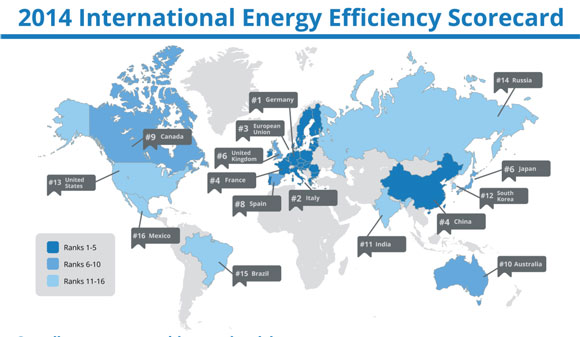
It’s not just from the nuclear giants Exelon and Entergy–energy efficiency and renewable energy programs are under attack from nuclear and fossil fuel-dominated utilities across the country.
In Florida, Tampa Bay Times reporter Ivan Penn, who last month won the prestigious Loeb award for business reporting for his work examining the Levy County and Crystal River nuclear power reactors, is back with an excellent new article on new efforts from Duke Energy, Florida Power & Light and Tampa Electric to slash energy efficiency and renewable energy programs in the state.
The entire article is worth reprinting, but we’ll limit ourselves to a few excerpts.
Penn begins:
“Florida’s big public utilities spend very little on energy conservation. On Monday, they will ask state regulators for permission to spend even less.”
After noting that the public will not be able to testify at today’s Public Service Commission hearing on the issue (although 100 people protested outside), Penn succinctly explains what’s at stake:
“For both utilities and their customers, the arithmetic is pretty simple.
“Customers know that if they use less electricity, their power bills go down. If collectively they use a lot less electricity, utilities won’t have to build as many new power plants. If utilities don’t build new plants, consumers don’t have to pay for them.
“Use less power, spend less money.
“For Florida’s public utilities, though, that kind of thinking doesn’t add up. Utilities make money by building more plants and selling more power.”
Penn notes that over the past decade, per capita energy use in Florida has dropped by 12%, adding,
“More than ever, consumers and companies squeeze every penny. Example: Tampa-based First Housing Development Corp. of Florida installed an air-conditioning monitoring system, highly efficient LED lighting and a 150 kilowatt solar array. It expects to cut its electric bill from $36,000 a year to $6,000.
“That’s good news for First Housing. Bad news for Tampa Electric.”
Here’s what the utilities want:
“The state’s utilities will ask the PSC for permission to slash their already meager energy conservation programs.
“Duke Energy once planned to conserve 333 gigawatt hours in 2019. On Monday, it will ask to lower that to 21.
“Tampa Electric’s proposal: 39 gigawatt hours to 17.
“Florida Power & Light: 229 to 4.”
Unlike far too many journalists, Penn doesn’t just take utility pronouncements at their word:
“Utilities argue that with historically low natural gas prices, it is cheaper to generate electricity than to subsidize efforts to save it. The Tampa Bay Times asked all three utilities for evidence to support their position. The utilities said they do not have that type of comparison.
“Also, the utilities themselves often argue in other contexts that, natural gas prices are unlikely to stay so low….
“….The utilities also emphasize that while demand has been flat lately, they predict it will rise dramatically over the next decade. Duke, which forecasts a 25 percent increase, plans to build $1.7 billion in new plants. FPL hopes to build an $18 billion nuclear plant.”
And Penn delves deeper into the issue, contrasting the success of Vermont’s energy efficiency measures with the stance of the Florida utilities.
He cites Martin Kushler of the American Council for an Energy-Efficient Economy (ACEEE), who points out:
“…such programs cost 2.8 cents to save a kilowatt hour, compared to a new natural gas plant that will cost 7 to 8 cents to generate a kilowatt hour.
“Those figures are comparable to separate reports from the U.S. Department of Energy that list the cost of energy efficiency at 2 to 3 cents a kilowatt hour and new natural gas generation at 6 to 7 cents.”
Note that Penn didn’t just take ACEEE’s word for it either–he checked with official DOE reports as well. The mark of a good reporter.
Just read the whole article. And if you’re in Florida, the end of the article includes this:
“If you would like to comment on the energy conservation issue, reference Docket 130199 and address the correspondence to:
The Florida Public Service Commission
Office of Commission Clerk
2540 Shumard Oak Blvd.
Tallahassee, FL 32399-0850”
The reality is that if the Florida PSC approves the utilities’ request, the outcome will be higher electricity prices, which will have the effect of encouraging more people to take their own energy efficiency measures and installing their own rooftop solar, which will further eat into utility sales and profits. These utilities are trying to postpone the inevitable–in actuality, they may simply hasten it.

That Florida utilities think energy efficiency programs in the state are too aggressive would be laughable if they weren’t likely to get away with it. But they are. Meanwhile, for perspective, ACEEE last week issued a new report that finds the U.S. ranks 13th out of 16 leading world economies on energy efficiency, ahead of only Russia, Brazil and Mexico. Germany ranked first, followed by Italy. The European Union as a whole and China tied for fourth.
In other words, the U.S. should be increasing its energy efficiency goals (and its economic competitiveness with other nations)–not bowing to pressure from utilities whose obsolete business model is based on building more power plants and sucking up more money from ratepayers based on how much money the utility has invested rather than how well the utility provides electrical service.
Meanwhile, in a different survey, the U.S. electrical grid system ranked dead last among the top nine Western industrialized countries in length of time of outages–which, in a sign of just how bad the grid has become, have risen 285% since 1984. It’s time for serious investment into the smart grid of the 21st century.
It’s not just in Florida that utilities are trying to turn back progress, however.
In Iowa, the state turned down a $1 million grant from the Department of Energy to boost solar power in the state after utilities there lobbied Governor Terry Branstad’s administration to change the grant’s purpose. The utilities there were afraid the grant could make the state a national leader in solar power, and wanted the grant to be used to show the “limitations” of solar power as well as its benefits.
But Iowa may become that solar leader in spite of Gov. Branstad’s efforts on behalf of polluting utilities. The Iowa Supreme Court ruled recently that rooftop solar power companies can install solar systems within a utility’s service area (to the consternation of Iowa’s Alliant Energy, which brought the lawsuit). The ruling applies only to Iowa, of course, but could well serve as a precedent in other states where utilities are fighting small rooftop solar companies.

Now that we’re on the good news, let’s stay there. Not all utilities are fighting solar–some, like the publicly-owned Austin Energy in Texas, embrace it. Austin Energy wants to build a new community solar farm on a 26-acre patch of scrub brush and waist-high grass in East Austin large enough to power 500 homes. Community solar farms–especially useful for renters and those homeowners whose houses are unsuitable for rooftop solar–are a fast-growing concept across the country, with 52 such projects in 17 states underway.
And the city of Chicago, in partnership with Vote Solar, the World Wildlife Fund and the Environmental Law and Policy Center, is promoting rooftop solar in the city by offering 25% below-market rates on rooftop solar installations throughout the summer. In Chicago. Home of legendary winters and snowstorms. Solar works everywhere.
Chicago and Austin clearly don’t need the help, but maybe NBA basketball legend, Deadhead, and ESPN analyst Bill Walton can sell solar power to the rest of the country. At least NRG Energy thinks so: it has hired Walton to be its national spokesperson for its NRG Home Solar company. NRG believes rooftop solar is the future of electricity generation so it shouldn’t be surprising it’s the first company, that we know of anyway, to hire a celebrity spokesperson to promote solar power.
On the wind power side of the renewables issue, the Department of Interior plans to lease 344,000 acres of off the coast of New Jersey for offshore wind power development, following on similar, but smaller, leasing programs throughout the mid-Atlantic states. The National Renewable Energy Laboratory says the site could produce 3.4 Gigawatts of offshore wind power when developed. That’s the good news. In the other states the Interior Department has opened for offshore wind development, its releases announcing the projects have included warm words from the Governors involved. Not so in New Jersey, where Gov. Chris Christie had nothing to say about the offer. Seems that Gov. Christie doesn’t like wind power, nor the thousand of jobs new offshore wind projects in his state would create.
Michael Mariotte
July 21, 2014
Permalink: https://www.nirs.org/2014/07/21/utilities-attack-energy-efficiency/
You can now support GreenWorld with your tax-deductible contribution on our new donation page here. We gratefully appreciate every donation of any size–your support makes our work possible.
Comments are welcome on all GreenWorld posts! Say your piece above. Start a discussion. Don’t be shy; this blog is for you.
If you like GreenWorld, you can help us reach more people. Just use the icons below to “like” our posts and to share them on the various social networking sites you use. And if you don’t like GreenWorld, please let us know that too. Send an e-mail with your comments/complaints/compliments to nirs@nirs.org. Thank you!
GreenWorld is now posted on tumblr at https://www.tumblr.com/blog/nirsnet
Note: If you’d like to receive GreenWorld via e-mail daily, send your name and e-mail address to nirs@nirs.org and we’ll send you an invitation. Note that the invitation will come from a GreenWorld@wordpress.com address and not a nirs.org address, so watch for it.



